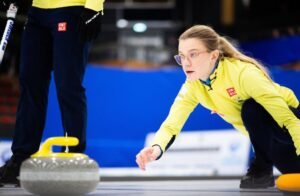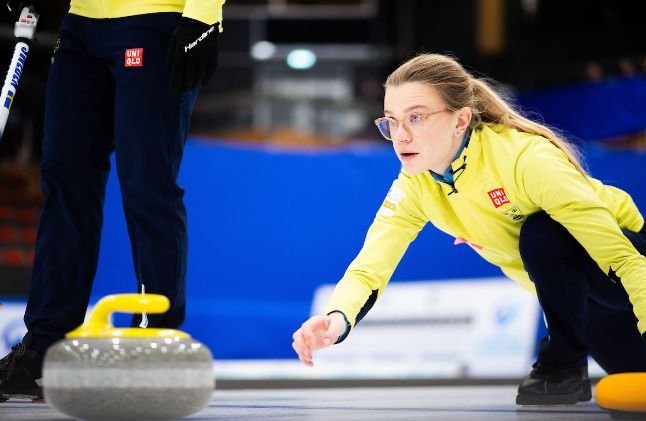World Mixed Doubles Championship and World Senior Championships return to Fredericton, Canada

World Curling championship action returns to Canada on Saturday 26 April when the World Mixed Doubles Curling Championship 2025 gets underway at the Willie O’Ree Place in Fredericton, New Brunswick.
At the same time, and in the same venue, the World Senior Curling Championships 2025 will also be taking place.
Fredericton is located on the East Coast of Canada, nestled between the provinces of Nova Scotia, Prince Edward Island, Quebec and the American state of Maine. This city of 115, 000 people last hosted these two World Curling championships in 2013.
Mixed Doubles
As well as being the most prestigious annual mixed doubles competition, this year’s world championship represents the last chance for direct qualification to the Milano Cortina 2026 Olympic Winter Games.
Points gathered from results in both last season’s world championship and this event will determine the seven available direct slots in the Olympic line-up (with hosts Italy automatically qualified). All other Member Associations participating in this championship have a further chance to qualify through the Olympic Qualification Event 2025 that will be staged in December, in Kelowna, Canada, when two further Olympic spaces will be on offer.
The first World Mixed Doubles Curling Championship was staged in 2008, in Vierumäki, Finland. This year’s will be the 17th edition (the 2020 event was cancelled due to the Covid-19 pandemic) and will feature 20 Mixed Doubles pairings, representing Member Associations who have qualified from the previous world championship or from the World Mixed Doubles Qualification Event 2024, which was held in Dumfries, Scotland in December 2024.
Teams
The four teams that qualified from the World Curling Mixed Doubles Qualification Event 2024 are (in qualification order): Spain, New Zealand, Finland, and Türkiye.
For round-robin action, the teams have been divided into two groups of ten.
Group A: Canada, China, Denmark, Finland, Germany, Italy, Korea, Netherlands, Scotland, Sweden.
Group B: Australia, Czechia, Spain, Estonia, Japan, Norway, New Zealand, Switzerland, Türkiye, United States.
Highlights among the teams:
Australia: Tahli Gill and Dean Hewitt are their nation’s only curling Olympians and are making their sixth appearance together at this year’s championship.
Canada: The host nation is represented by Jocelyn Peterman and Brett Gallant, who took silver medals in 2019.
China: The team consists of Yu Han and Zhiyu Wang, who are new combination at this level.
Czechia: Julie Zelingrová and Vit Chabičovský will make their third appearance together at this level.
Denmark: Jasmin and Henrik Holtermann will make their fourth appearance at this event.
Estonia: Marie Kaldvee and Harri Lill, last year’s silver medallists, are making an eighth appearance.
Finland: Lotta Immonen and Markus Sipila, return for their second appearance at this level, after having finished 17th in 2022.
Germany: Pia-Lisa Schoell, who makes a fifth appearance, including gaining bronze in 2022, is joined by new partner Joshua Sutor.
Italy: Stefania Constantini and Amos Mosaner, reigning Olympic champions, will represent their country.
Japan: Matsumura Chiaki and Tanida Yasumasa will make a third appearance after taking silver in 2023.
Korea: Kim Kyeongae and Seong Jihoon are a new combination at this level.
Netherlands: Although they have both played at this level previously, this is a first time Lisenka Bomas and Wouter Goesgens will play together.
New Zealand: Jessica Smith and Ben Smith, the brother and sister duo, are a new combination at this level.
Norway: Kristen Skaslien and Magnus Nedregotten, current Olympic silver medallists and last year’s world bronze medallists, will represent their country.
Scotland: Jennifer Dodds, current women’s team Olympic champion, and Bruce Mouat, current men’s team world champion, join for this event. This pairing won this title in 2021.
Spain: Oihane Otaegui and Mikel Unanue will make their sixth appearance in the World Mixed Doubles.
Sweden: Anna Hasselborg and Oskar Eriksson, 2019 champions, and both Olympic team gold medallists, will be making a second appearance together.
Switzerland: Alina Paetz and Sven Michel, silver medallists together in 2022 and winners in 2011, will return to this event.
Türkiye: Dilsat Yildiz and Bilal Omer Cakir will make their third appearance together, although this is an eighth appearance for Dilsat.
United States: Cory Thiesse and Korey Dropkin, World Mixed Doubles champions in 2023, will represent Team United States.
Türkiye’s Bilal Omer Cakir and Dilsat Yildiz at the World Mixed Doubles Curling Championship 2024 © World Curling / Celine Stucki
Playing Format
Round-robin play gets underway on Saturday 26 April and continue until Thursday 1 May.
After this, the top three teams from each group proceed to play-off competition. The two group winners go direct to Friday evening’s semi-finals (2 May), while the second and third teams cross groups and play qualification games on Friday morning for the chance to face the group winners in the semi-finals.
The bronze medal game will be staged on the morning of Saturday 3 May, followed by the afternoon gold medal final.
How to watch
All games will be available to watch live on the Curling Channel with select feature games. Find out more information about what Curling Channel passes are available and how to purchase here.
Please note, there may be restrictions due to broadcast partner agreements.
Follow live scores and results here.
Seniors
This is an open entry event for women’s and men’s teams from World Curling’s 75 Member Associations. Athletes must be over the age of 50 to compete in this event. This year, 31 men’s teams are due to take part, while 16 women’s teams will compete.
Men
The men are divided into five round-robin groups:
Group A: Belgium, Canada, England, Ireland, Netherlands, Wales
Group B: Estonia, Finland, Hungary, Israel, Japan, Portugal, United States
Group C: France, Italy, Latvia, Nigeria, Norway, Sweden
Group D: Denmark, Spain, Germany, Korea, New Zealand, Scotland
Group E: Australia, Czechia, Philippines, Poland, Slovenia, Switzerland.
Playing Format
The men will play 19 round-robin sessions, starting on Saturday 26 April and concluding on Thursday 1 May.
After this, the top two ranked teams in each group plus two third ranked teams with the better DSC qualify for the play-offs on Friday 2 May. Teams will be ranked 1-12 by comparing the DSC of the teams with the same rank from each group. Teams ranked 1-4 get a bye to the quarter finals. Meanwhile, teams ranked 5-12 will play qualification games on the evening of Thursday 1 May, with the winners going on to the quarter-finals.
Semi-finals will be played on Friday 2 May, with medal games on Saturday 3 May.
Team Czechia at the World Senior Curling Championships 2024 © World Curling / Celine Stucki
WOMEN
The women are divided into three round-robin groups:
Group A: Canada, Czechia, Hong Kong China, Japan, Sweden
Group B: Finland, Latvia, New Zealand, Scotland, United States
Group C: Australia, Denmark, England, Ireland, Lithuania, Switzerland.
Playing Format
The women will play 14 sessions of round-robin play and, following this, the top eight ranked teams will proceed to quarter-finals on Friday 2 May. Semi-finals will be played later on Friday 2 May, with medal games on Saturday 3 May.
